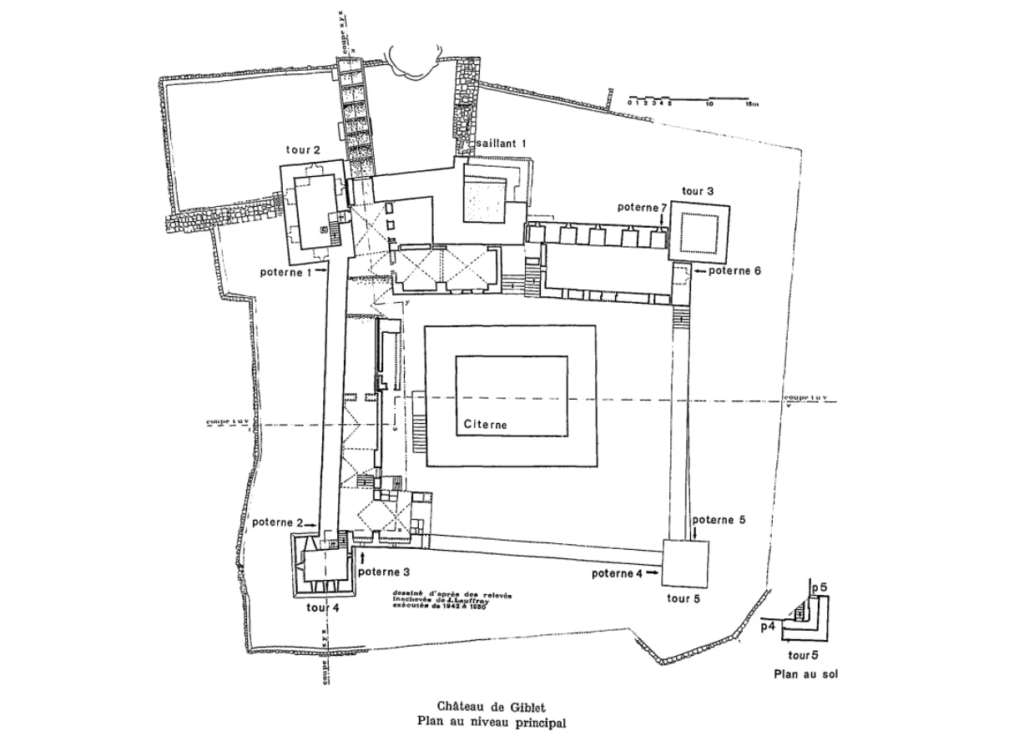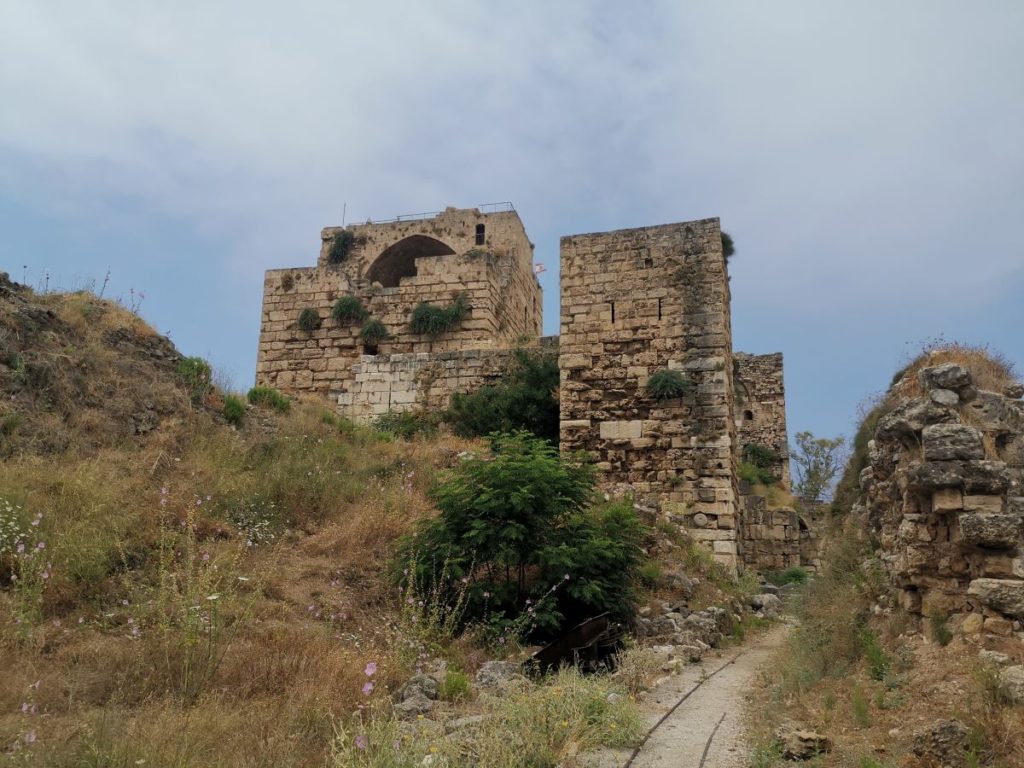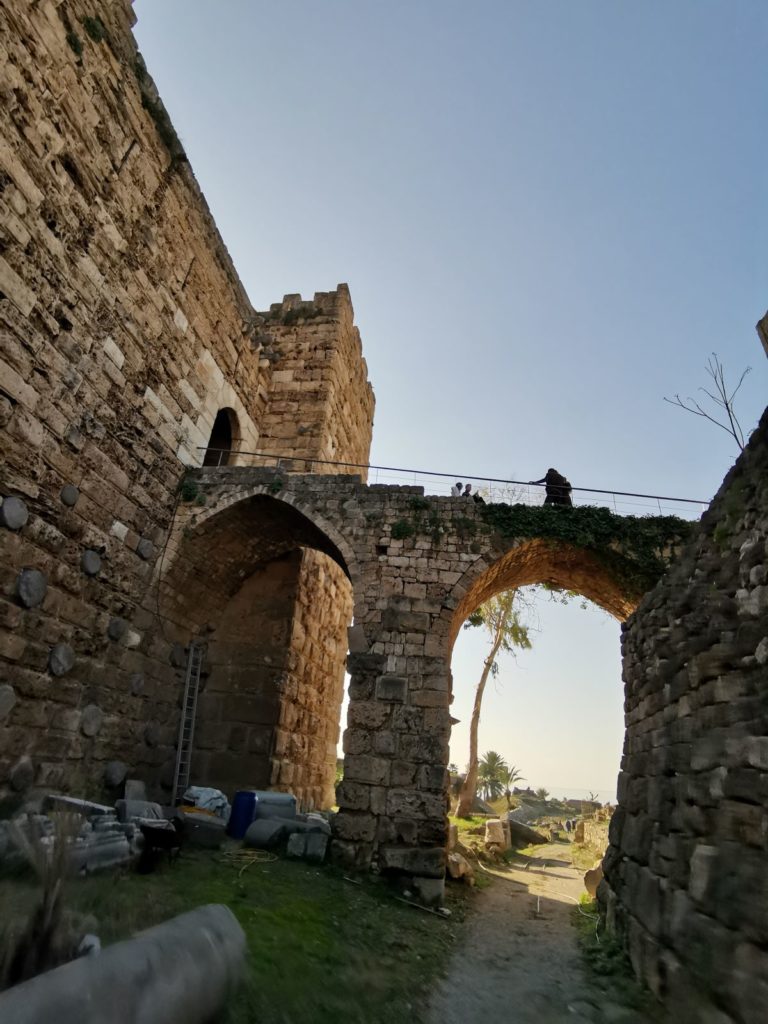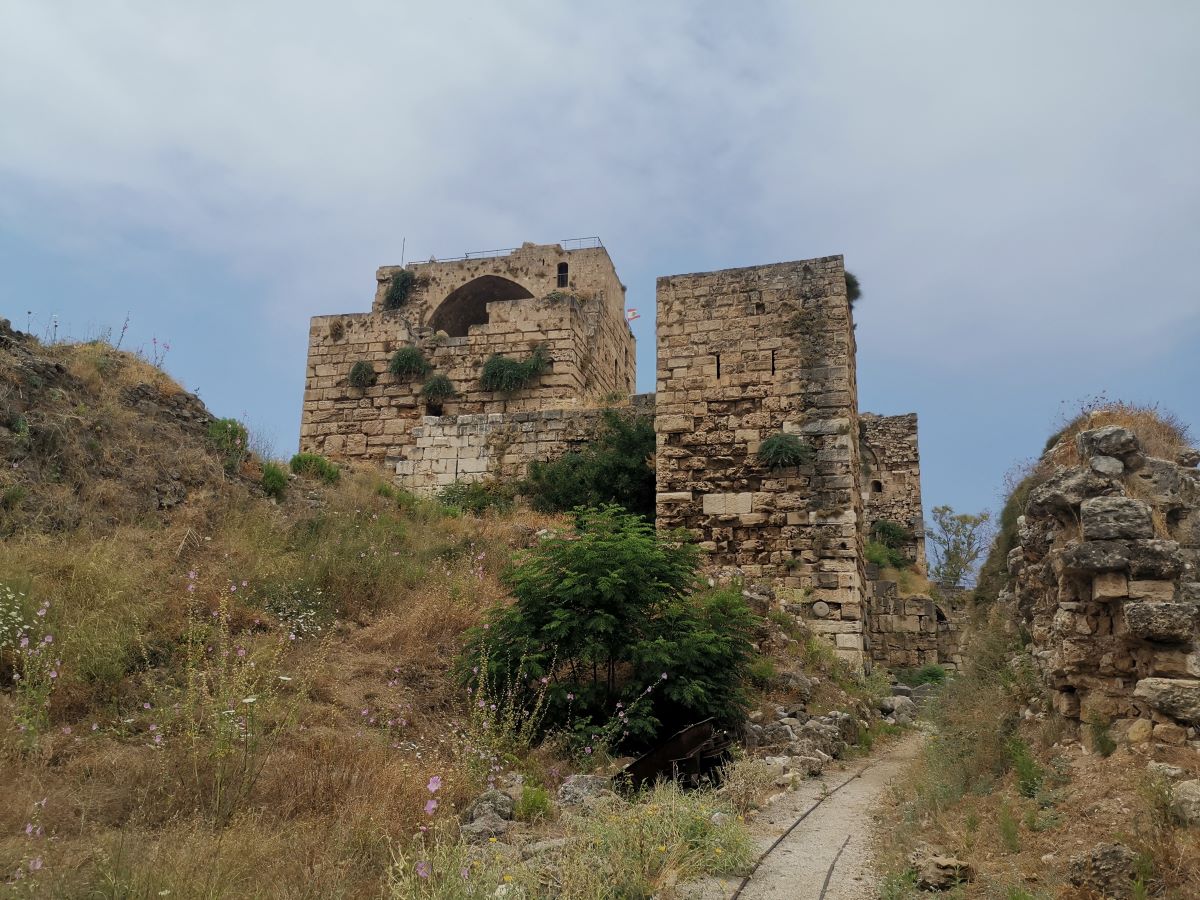The archeological site of Byblos features one of the earliest fortresses built during the Crusader era.
The fortress, as well as the city, came to be known as “Gibelet” during that time.
Timeline
April 28th, 1104 – Following fierce resistance by the Banu Ammar, lords of Byblos during the Fatimid era against Raymond de Saint Gilles, count of Toulouse, the latter took Gibelet and granted a third of the city to the Genoese Embriaco family in recognition for their assistance in the battle.
June 26, 1109 – Bertrand, son of Raymond de Saint Gilles, by a solemn act in the presence of the king of Jerusalem Baudouin I and several lords, gave to the church of Saint-Laurent de Genes, through the intermediary of the Genoese Guglielmo Embriaco, the whole city of Gibelet, with its affiliations, Le Puy de Connetable and a third of the city of Tripoli.
From now on, from father to son, the Embriacs will have Gibelet as their hereditary fief in exchange for a fee to be paid to the cathedral of Genoa.
1157 – The fortress is heavily damaged following an earthquake
1187 – The fortress fell to Saladin who, after capturing Hugues III of Gibelet during the great battle of Hattin, set him free when the fortress’ garrison agreed to surrender.
1190 – The city of Gibelet saw its defensive walls and part of its fortress taken down by order of Saladin after hearing the news of the forthcoming arrival of the Holy Roman Emperor Frederic Barbarossa. The fortress and its donjon were kept mostly intact.
1197 – The city of Gibelet was taken by the Crusaders once again thanks to the skilful diplomacy of the lady of Gibelet with the Muslim governor who agreed to give back the city peacefully.
1267 – According to an Arab chronicle, the Emir Nadschebi, lieutenant of Mamluk Sultan Beibars, took Gibelet in April 1267 without resistance and the inhabitants took refuge in Tripoli.
1289 – The fortress, along with the city of Gibelet fell to the Mamluks. The last Cursader lord Pierre de Gibelet, son of Guy II, is believed to have stayed in the city for some time under the protection of the sultan. In 1307 he retired to the island of Cyprus.
Structure
The fortress of Gibelet is one of the oldest castles built by the Crusaders in Lebanon.
It is the finest example of a new 12th-century type, which mixes the castrum-type with the turris-type castle: a roughly square set of walls strengthened by corner towers, built around a central donjon, thus forming two layers of defense.
The castle rests on a hill dominating the southeast corner of the city. It was built on Canaanite era ramparts, one from 3100 to 3000, the other around 2900. There is also a piece of rampart in large rough blocks from the Temple of the Hyksos (1725-1580 BC), in the northeast corner of the castle.
The builders re-used stones in the construction of the castle from the 6th century BC Persian fortress. Roman-era columns were horizontally inserted into the fortress’s walls – a process that was replicated for the largest number of the fortified Crusader works during the 12th century.
Built from sandstone, the castle is enclosed by a moat that consists of the following:
Donjon – it is a massive and rectangular structure, located in the center of a courtyard enclosed by curtain walls of square plan. It is considered one of the oldest models of Crusader works in the region. It measures 18m in the North-South direction and 22m in the West-East direction. Its walls are 4m thick.
Towers – four towers (three square, one oblong) and, in the middle of the northern front, a salient whose plan is also irregular. These irregularities in the primitive construction come from the fact that part of the base of the fortress was established on ancient foundations. One of the towers (tour 3 on the map) was built on top of an earlier structure that dates back to the Fatimid era.
Bridge – it is a structure supported by two arches that crosse a ditch and leads to the main entrance of the fortress
Marks – Lapidary marks can be noticed around the castle. You can refer to picture number 2 to locate the marks.
Karim Sokhn
Tour Operator & Tour Guide
References:
Les Chateaux des Croisds en Terre Sainte III, La Defense du Comte de Tripoli et de la Principaute d’Antioche.





